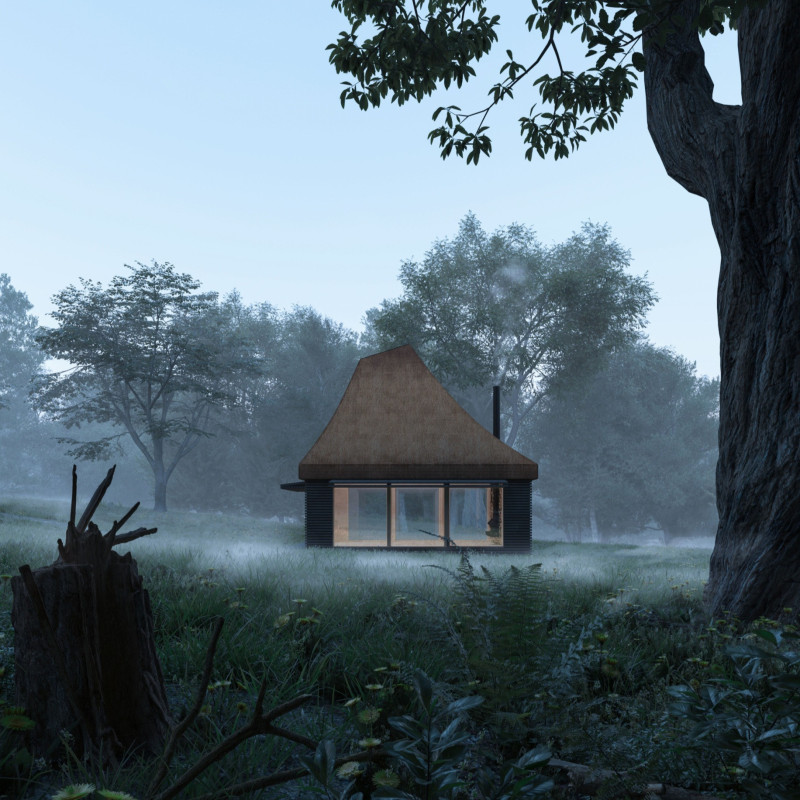5 key facts about this project
The Tiny Kiwi Meditation Cabin offers a peaceful space designed for meditation and reflection. Located within a beautiful landscape, it aims to provide a retreat from the stresses of everyday life. Drawing inspiration from traditional Maori houses, the cabin’s design incorporates cultural elements that create a calming atmosphere. The overall concept focuses on connecting users with both themselves and their environment.
Structural Form
The cabin features an elevated structure that enhances views of the surrounding area. This height contributes to a sense of openness and creates a space that feels tranquil. A skylight is included in the design, allowing natural light to fill the room, which adds to the peaceful experience. Large windows connect the inside of the cabin with the outside world, inviting the beauty of nature into the space.
Material Considerations
Material choices prioritize sustainability while maintaining an appealing look. Wood is the main material used in the structure, valued for its easy availability and low environmental impact. The exterior is covered with charred timber planks that resist moisture and fit well with the natural surroundings. This choice reflects a blend of traditional and modern building practices.
Interior Atmosphere
Inside, the cabin walls are finished with a lighter type of wood, which helps create a spacious and calming environment. This wood not only adds to the serene atmosphere but also improves the sound quality within the cabin. The roof uses straw thatch, a nod to Maori architecture, which effectively directs water away from the building. Such choices respect cultural heritage while providing practical solutions for climate challenges.
Functional Design Features
The cabin also includes a system of folding shades that allow for privacy when needed. Users can control the amount of light that enters the space, balancing the desire for openness with the need for solitude. This thoughtful design makes the cabin adaptable to different situations, ensuring it serves its purpose well as a sanctuary for meditation.
The overall design blends traditional forms with contemporary needs. A notable detail is the gently sloping roof, which draws the eye upward and creates a connection to the sky. This architectural choice reflects the cabin’s intention as a place for mindfulness and self-reflection, encouraging a deep sense of calm and awareness.






















































